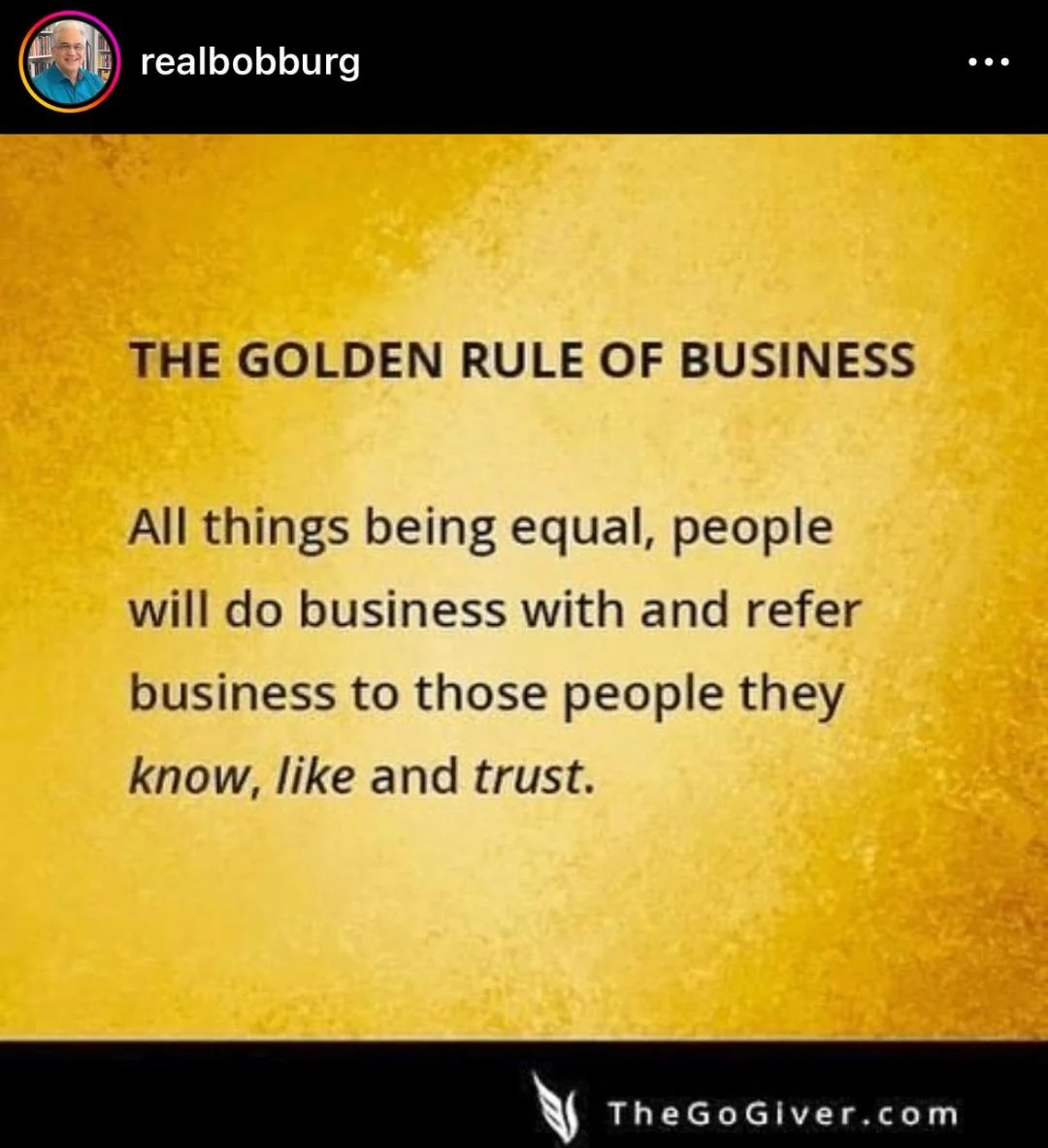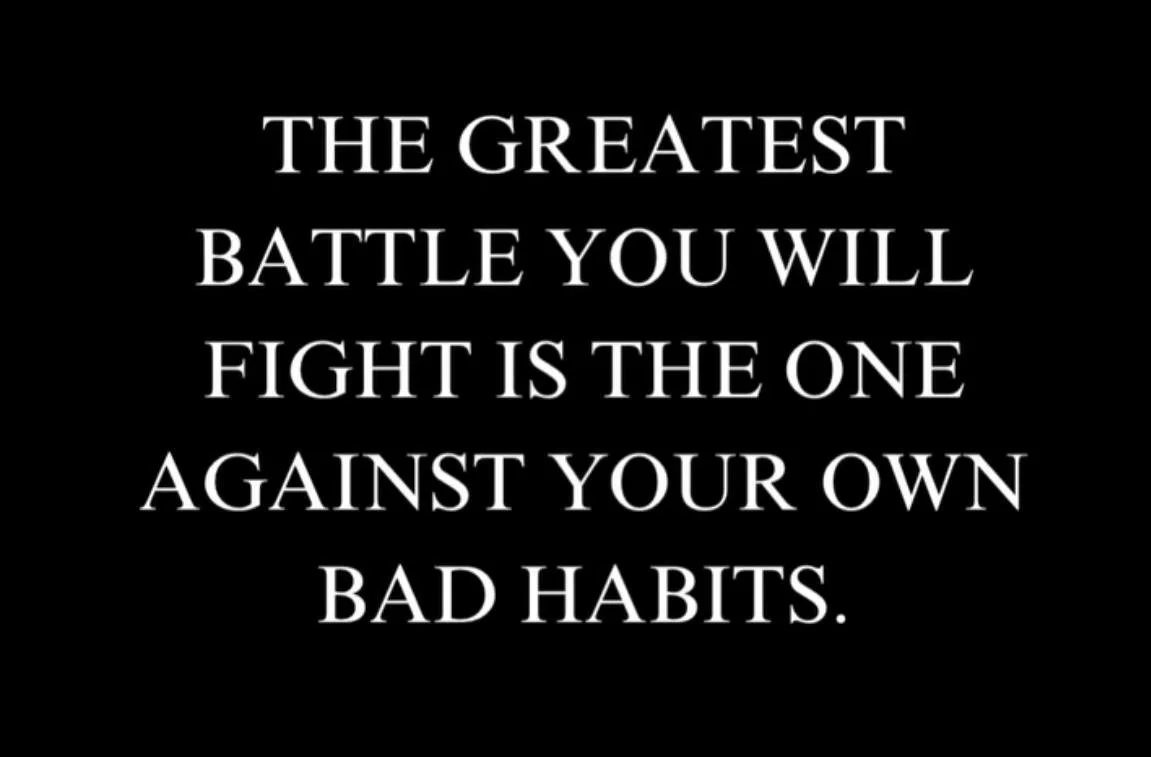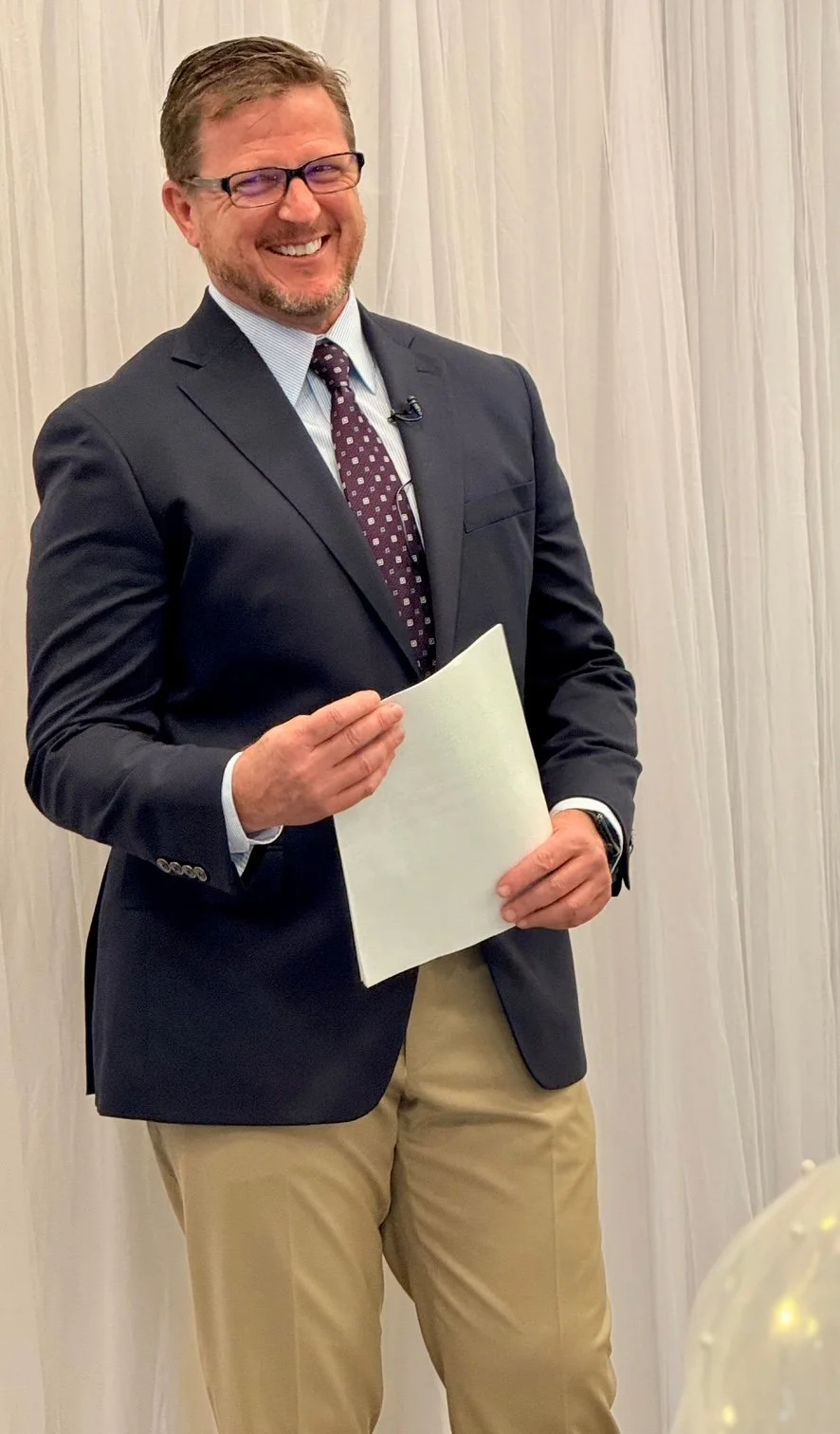
BLOG POSTS
The Science of Succeeding with People: From Inception to Influence
It’s been a while since I shared my thoughts on a book I've read, but I recently picked up one that truly captivated me. After listening to a great podcast conversation between Dr. Jordan B. Peterson and Vanessa Van Edwards, I was inspired to read her book, Captivate: The Science of Succeeding with People. This post is a reflection on what I gained from that reading experience and the three key takeaways that have stuck with me the most. I’ll be sharing more about her other book, Cues, in a future post.
Have you ever left a conversation feeling like you just missed the mark? Or struggled to understand what was really motivating a difficult colleague or team member? Social dynamics can feel like a complex puzzle, but what if you could learn to read the room and communicate with purpose? One of the biggest lessons I took from this book is that social success isn’t a magical, inborn talent; it’s a science. By understanding a few core principles, you can begin to navigate conversations and relationships with greater confidence and influence.
Takeaway 1: Your Ability to Connect Begins with Reading People
One of the most powerful concepts I encountered was the idea of using the Big 5 personality traits as a framework for understanding others. The book opened my eyes to how much my ability to connect with someone improves when I can observe what makes them tick. I've found it incredibly helpful to consider these five areas when I meet someone new or engage with a team member:
Openness: Are they open to new ideas, abstract concepts, and unconventional thinking, or do they prefer tradition and concrete facts? Adjusting your pitch accordingly can make all the difference.
Conscientiousness: Do they value structure, order, and detailed plans, or are they more spontaneous and flexible? Now, I recognize that a highly conscientious person will appreciate a well-organized presentation much more than someone who is not.
Extroversion: Do they get energy from being around others? Do they enjoy lively group discussions and thrive in the spotlight, or do they prefer quiet, one-on-one interactions? This helps me choose the right setting for a conversation.
Agreeableness: How much do they prioritize harmony and cooperation? I've learned that someone who is highly agreeable will be more receptive to proposals that benefit the whole team.
Neuroticism: Do they tend to worry, stress, or experience emotional instability? Understanding this trait has helped me approach sensitive topics with greater care and empathy, providing a sense of stability.
By observing these tendencies, you can move from guessing what people need to genuinely understanding them.
Takeaway 2: Your Belief is a Superpower
As a leader, your perception of others isn’t just a passive observation; it’s a powerful tool. The concept of the Pygmalion Effect was a huge "aha" moment for me. The book explains this scientific principle: when you hold a strong, positive belief in someone’s potential, that belief can actually influence their performance. When you expect great things from a team member, you subconsciously provide them with more opportunities, better feedback, and increased support. They, in turn, feel a sense of confidence and rise to meet your high expectations. I've realized that I'm not just seeing their potential; I'm actively helping them realize it.
What belief are you currently holding about a team member, and how might it be impacting their performance?
Takeaway 3: A Simple Framework for Difficult Conversations
One of the most practical tools I took away was a simple, three-step framework for handling difficult conversations, which Vanessa Van Edwards calls the NUT Job:
N - Name the Emotion: I've started practicing this. First, you name what the other person is feeling. Phrases like, "It sounds like you're feeling frustrated," or "I sense you're concerned about this," can show you are listening and help de-escalate the situation.
U - Understand What They Want: Next, you work to understand what the person is really seeking. Behind the anger or frustration is usually a need for control, validation, or certainty. Asking questions helps get to the root of their request.
T - Transform: Finally, you transform the situation by offering what they actually need. If they are seeking control, offer them a choice. If they need validation, acknowledge their concern. This shifts the dynamic from a conflict to a collaborative effort to find a solution.
This is just a glimpse into the science of human connection. The ideas presented here are based on decades of research and are just a few of the many powerful lessons I took away from reading Captivate: The Science of Succeeding with People. If you're ready to master your social interactions and become a more influential and authentic leader, I highly recommend picking up a copy and discovering how to truly connect with everyone you meet.
The Unseen Currency of Leadership: Know, Like, and Trust
In the modern business landscape, do you find yourself focusing on metrics, market share, and technological innovation as the ultimate measures of success? Yet, beneath the surface of every groundbreaking deal, every successful project, and every career ascent lies a more enduring and powerful currency: the strength of human relationships. As this timeless principle suggests, "All things being equal, people will do business with and refer business to those they know, like, and trust." For senior-level professionals, this isn't a quaint business maxim—it is the very foundation of your strategic influence and sustained success, and it is the key to building a career of true significance.
The first two pillars, knowing and liking, are often the entry point. To be known is to have a presence—to be visible, to build a reputation for competence, and to make your expertise apparent. This isn't about passive observation; it is about deliberate engagement and active contribution. Liking, however, goes deeper. It's about shared values, authentic interactions, and a genuine rapport that transcends a purely transactional relationship. It's the moment when a professional colleague becomes a trusted confidant, when a client feels you are truly a partner, and when your team feels you are an advocate for their success.
The third pillar, trust, is the ultimate differentiator. Trust is built through consistency, integrity, and proven competence. It's the result of doing what you say you will do, of making sound decisions even when they are unpopular, and of demonstrating unwavering reliability over time. When you are trusted, you move beyond the confines of your formal title. You become a go-to advisor, a valuable asset, and a magnet for opportunity. In an environment where products and services can feel like commodities, trust is the competitive advantage that cannot be easily replicated. It reduces friction, accelerates decision-making, and creates a virtuous cycle of collaboration and referral.
How do you actively build trust, and what would your colleagues say about your consistency and integrity?
For senior leaders or seasoned individual contributors, this principle must be an active part of your strategy. This means moving beyond networking for the sake of networking. It means investing time in building bridges between departments, mentoring rising talent, and truly understanding the needs of your clients and colleagues. It is a commitment to cultivating a personal brand built not on what you do, but on who you are. This isn't about being a people-pleaser; it is about being a people-builder—someone who uplifts others and earns their respect and loyalty through genuine connection.
In what ways are you actively investing in others to cultivate your personal brand as a "people-builder"?
Ultimately, the ability to build and sustain genuine relationships based on knowing, liking, and trusting is a non-technical skill that will outlast any technological trend or market shift. In a world of increasing automation and rapid change, human connection remains irreplaceable. Success can be measured in titles and earnings, but significance is measured by the impact you have on the lives and careers of others. By mastering the art of building these strategic relationships, you solidify your influence, secure your professional reputation, and, most importantly, create a legacy that extends far beyond the bottom line.
The Toughest Opponent is in the Mirror
In a world defined by constant disruption and competitive pressures, do you often find yourself looking outward for the next great challenge? You strategize to outmaneuver a rival, innovate to capture market share, or build a team to tackle a monumental project. Yet, what if the most formidable and consequential battle you will ever face is not found in the marketplace, but within yourself? What if it's the quiet, persistent war against your own bad habits? For senior professionals—whether you are an individual contributor or a leader—recognizing this truth is the first step toward unlocking a new level of strategic influence and personal growth.
These habits aren't always grand, dramatic flaws. They are often subtle, deeply ingrained patterns that have served you in the past but now hinder your progress. Could it be the reliance on reactive decision-making instead of proactive planning? The habit of micromanagement that stifles your team’s autonomy? Or the unconscious tendency to avoid difficult conversations? You can spend a career refining external skills and mastering technical competencies, only to be held back by an internal inertia. The true test of a senior professional is not just your ability to solve external problems, but your capacity for radical self-awareness and the courage to confront the behaviors that no longer serve you.
For a leader, this internal battle has an amplified effect. Your habits—good or bad—become the cultural norms of your team. A leader who consistently operates in a reactive mode trains those they lead to live in a state of crisis. A leader who fails to delegate effectively communicates a lack of trust, which erodes morale and limits the growth of those in their care. The discipline to break a bad habit is a powerful, non-verbal message to your team. It demonstrates vulnerability, a commitment to continuous improvement, and the accountability that is a hallmark of truly effective leadership. By modeling this behavior, you not only improve yourself but also create a safe environment where your team members feel empowered to undertake their own journeys for self-improvement.
What habits are you modeling for your team right now, and what message are they sending?
Conquering these habits requires more than mere willpower; it demands a strategic approach. It starts with a clear-eyed assessment of the behaviors that are undermining your effectiveness. This might mean inviting honest feedback, journaling to identify patterns, or simply dedicating time to quiet reflection. The next step is to create a new system, not just a new resolution. Rather than simply resolving to "stop procrastinating," what if you built a system of structured work blocks with incremental steps and clear breaks? Instead of vowing to "be a better communicator," what if you scheduled dedicated one-on-one time with your team where the only goal is open dialogue? Small, consistent actions build new neural pathways that eventually replace the old, limiting habits.
What system could you create this week to begin replacing one of your old habits?
Ultimately, the fight against your own bad habits is not a one-time event but a continuous process of self-refinement. In a fast-paced business environment, the ability to adapt is a prerequisite for success. This adaptability begins with the willingness to adapt yourself—to discard the comfortable but ineffective habits of the past and embrace a new way of operating. It's a journey that builds resilience, hones judgment, and solidifies your reputation as a leader who not only guides others but is also in command of themselves.
Nothing is Hard Forever: The Truth About Enduring Struggle
In this final piece of my series, "Navigating the Uncharted: Lessons from My Job Search Journey," I want to show you that struggles, strife, and difficulties will eventually come to an end. The path may not unfold as we expect, and relief rarely arrives as quickly as we'd like. But when we finally emerge on the other side, we can look back and understand the experience as "the refiner's fire." The struggle was a process, taking us from something unvarnished and raw to a more complete and resilient version of ourselves. The journey is not over, but that particular trial is behind us.
My own seven-month search for a new role ended with an exciting new opportunity at Dun & Bradstreet. Like my experience, your struggles will also culminate in a moment of triumph. With that truth as our backdrop, let's explore the core idea for today's post.
In the midst of a daunting challenge, when the pressure mounts and the finish line seems impossibly distant, an insidious lie often takes root in our minds: that the pain or struggle will go on forever. We tell ourselves it's unbearable, that the discomfort is endless, and that there's no relief in sight. But that is a lie. It's a crucial truth to internalize, both as individuals and as leaders: nothing is hard forever.
Every challenge, no matter how intimidating, has a peak. Every struggle, no matter how intense, eventually subsides or transforms. Our spirit and strength, when committed, possess an incredible capacity for adaptation and growth. This isn't naive optimism; it's a fundamental reality of perseverance.
In these moments of profound discomfort, when the "voices in our heads" are at their loudest, you are presented with a stark, yet empowering choice. Consider these three options:
You can choose to quit. The immediate pressure will ease. The discomfort will dissipate. But the desired destination will remain out of reach, the lessons unlearned, and the potential for growth unrealized. This is the path of immediate relief, but ultimately falls short of overcoming.
It gets easier. As you persist, something remarkable happens. Your skills sharpen, your understanding deepens, and the once-formidable obstacles begin to feel less disheartening. The path itself doesn't necessarily change its terrain, but your capacity to navigate it grows. What once seemed impossible becomes merely difficult, then challenging, then manageable. This is the power of consistent effort, simply taking the next step, then the next, and persistently moving forward no matter how slow.
You get harder. More accurately, you get stronger, more resilient, and more capable. The struggle builds your internal fortitude, callousing your mind and spirit in the best possible way. You become more robust, better equipped for future challenges, and more confident in your ability to endure. This is the profound transformation that only sustained effort can bring.
The Only Way You Lose:
The profound truth is this: the only way you truly lose is if you quit before seeing it through. Every moment of discomfort, every whisper of doubt, every urge to give up is a test. If you yield, the opportunity for growth, for achievement, for becoming "harder" (stronger), is lost. If you push through, if you refuse to surrender to the temporary nature of the pain, you unlock a deeper level of capability and satisfaction.
As leaders, embracing this truth is vital. We must not only internalize it for ourselves but also instill it in those we guide. When our families or teams face seemingly insurmountable obstacles, it's our role to remind them that the current difficulty is not permanent. We empower them by:
Acknowledging the struggle, but refuting the lie of permanence.
Highlighting past successes where they pushed through.
Focusing on incremental progress and the growth they are experiencing.
Modeling perseverance ourselves.
The "long way" demands tenacity, but it promises a reward that the shortcut can never deliver: the profound satisfaction of enduring, adapting, and ultimately achieving what truly matters. It's the knowledge that you faced the storm, and you emerged stronger. Because nothing, truly, is hard forever.
The Long Way is the Shortcut: Why True Progress Requires Patience
In my ongoing series, "Navigating the Uncharted: Lessons from My Job Search Journey," I continue with the lessons learned from my experience. We've explored the initial shock of the job search, the crucible of growth found in adversity, and the enduring impact of that experience. Now, we turn our attention to a powerful truth that often runs counter to popular culture: the long way is the shortcut, because the shortcut never gets you there.
This statement reveals a profound wisdom: genuine, sustainable success and deep, meaningful impact are rarely achieved through expediency. Shortcuts, by their very nature, bypass the essential processes of learning, building, and refining. They might offer temporary gains, but they inevitably lead to superficial results, missed foundational lessons, and ultimately, a failure to reach the desired destination or to sustain it if reached.
Consider this principle across various facets of life and leadership:
In Your Career and Work: The "shortcut" might tempt you to cut corners on a project, avoid difficult feedback, or seek a rapid promotion without truly mastering your current role. The "long way" involves meticulously developing skills, building genuine relationships, taking ownership of mistakes, and consistently delivering high-quality work. While the latter might seem slower, it builds a robust foundation of competence and trust that leads to lasting career progression and meaningful impact. The shortcut, in contrast, often leads to exposure, burnout, or stagnation.
In Family and Friendships: In relationships, you might desire to avoid honest conversations, neglect consistent effort, or seek immediate gratification without investing in mutual understanding and support. This can manifest in a desire to "win" an argument, teaching yourself that you are in a relationship where there must be both a “winner” and a "loser." The "long way" is showing up consistently, practicing active listening, offering unconditional support, and honestly navigating conflicts with patience and empathy. This deliberate effort builds unbreakable bonds and deep trust that no quick fix can replicate.
In Community Building: Here, "community" refers to the group of people with whom you share life experiences. Here, a "shortcut" impact might involve grand, superficial gestures and promises without genuine engagement, or implementing solutions without understanding root causes and downstream effects. The "long way" means patiently listening to the needs of those in your care, building consensus where reasonable, fostering buy-in for initiatives, and showing commitment to sustained effort over years, even decades. This slower, more deliberate approach creates a truly resilient and empowered cohort.
In Personal Growth: You might be seeking quick self-help fads or avoiding introspection. It could also be the use of anabolic steroids to quicken visible muscle gain. The "long way" is the disciplined practice of self-awareness, confronting uncomfortable truths, consistently working on your weaknesses, and embracing continuous learning and persistent work. This arduous journey leads to genuine character development and a profound understanding of self.
Why the Long Way is the True Shortcut
The "long way" is the shortcut because it:
Builds Foundational Strength: It ensures you acquire the necessary skills, knowledge, tenacity, and character traits that are indispensable for sustained success.
Cultivates Resilience: Navigating challenges, the "long way" develops the grit and adaptability needed to overcome inevitable future obstacles.
Fosters Authenticity and Trust: People recognize and value genuine effort and integrity. The long way builds credibility that shortcuts can never achieve.
Leads to Deeper Understanding: True mastery comes from grappling with complexities, not from skimming the surface.
Ensures Sustainability: What is built slowly and deliberately tends to last. Shortcuts often lead to fragile structures that collapse under pressure.
As leaders, it is our responsibility to embody this principle and instill it in those we care for and lead. We must resist the pervasive cultural pressure for instant gratification and instead champion the value of diligent, patient, and thorough work. By embracing the "long way," we not only achieve our goals more effectively but also build stronger teams, deeper relationships, and a more resilient foundation for future success. It is the only path that truly gets us there.
Navigating the Uncharted: Lessons from My Job Search Journey
Many of you who know me well also know that, through a series of unforeseen circumstances, I have been intently pursuing the next significant step in my career. My journey began unexpectedly in January when I was caught up in a Reduction In Force (RIF) at Argano. Since then, it has been a period of intense activity, profound learning, and, at times, significant emotional struggle.
Since January 3rd, I have applied to well over 750 job postings. This sheer volume has provided a unique vantage point into our current hiring landscape. I've spent these past months actively engaging with my network, making personal contact with many of you, and forging new connections. I've had countless conversations, some leading to moments where I thought for sure I had landed that next great opportunity, only to be met with the disappointment of a different outcome. As I review the hundreds of roles I've applied for, each one a hopeful step forward, I'm reminded of the sheer scale and often unpredictable nature of this terrain.
This journey has illuminated some systemic realities of today's job market that are worth discussing:
The Unseen Gatekeepers: Application screening technology is often the first hurdle. HR teams (sometimes called "People Success" teams) increasingly rely on these tools, which, while efficient, often filter out highly qualified candidates before a human even sees their application. This lack of human interaction at the initial stage can be a significant barrier for many.
The Illusion of Opportunity: I've observed that not all job postings represent genuine, open positions. There are often two common scenarios, both of which can create misleading impressions and leave applicants with false hope:
Identified Candidates: Companies may have policies requiring external job listings, even when a hiring manager has already identified a candidate for the role. This practice, while often policy-driven, can inadvertently create negative impacts. The identified candidate may get hired by another organization due to unnecessary delays, leaving the hiring manager without the team member they knew they could trust. Meanwhile, applicants (both internal and external) who genuinely match the criteria invest time and hope in a role that was never truly available. These are just two of the negative impacts I am highlighting; there are several more.
Market Research: Particularly with consulting firms, job postings can sometimes be used to gauge market salary expectations for potential future projects, rather than for immediate hiring. When a company chooses to post a listing without a genuine intent to hire, it creates a misleading impression for the job market and the broader business community. While sometimes labeled a "common practice," it raises questions about transparency. As I reflected in my recent post on avoiding Groupthink, blindly following such practices can inadvertently erode trust in the very organizations People Success teams represent.
The Silence of the Process: Roughly 65-70% of all the job postings I applied for yielded no feedback whatsoever regarding the reason for non-selection. This lack of communication, while perhaps efficient for recruiters, leaves applicants without crucial insight and, frankly, without the common courtesy of a response after their time and effort invested.
The Power of Connection: Navigating these automated screens and opaque processes has underscored a crucial lesson: having and making personal connections is more vital than ever. It's often the essential step to bypass the technical filters and gain genuine human interaction. As part of your consideration of applying to a job listing, I encourage you to check out the hiring company and its leadership team. Most of the time, you can do that on the company’s website. See if there is something in the company’s publications, blog posts, or LinkedIn threads where you can help the leadership team know that you can help resolve a specific hurdle they may be facing. Consider writing a professional email and/or LinkedIn invitation for connection with your personalized note on how you can help them achieve their goals.
In the end. I have landed my next job. More on that later.
Over these next four weeks, I will be sharing a series of posts on the lessons I have had to learn, absorb, and apply in my own life throughout this journey. These are not just theoretical concepts; they are insights forged in the crucible of real-world experience, in the moments of hope, the depths of frustration, and yes, even times of despair.
I am sharing this today to let all who read these posts know that this series is as much self-talk and self-help for me as it is intended to guide and support others who may be navigating similar difficult terrain. I hope that by openly discussing these lessons – from pushing through discomfort, anger, angst, and even bitterness when things feel unbearable, to understanding why the "long way" is often the true shortcut – we can all find strength, clarity, and resilience on our paths.
Stay tuned for the first post next week.





